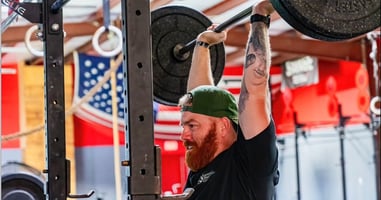The rotator cuff is a group of muscles and tendons that play a crucial role in shoulder stability...
Conquer the Curse of Shoulder Instability
As a former collegiate lacrosse player, I understand firsthand the challenges that athletes in field and court sports face when dealing with shoulder instability. These sports often involve repetitive overhead motions, sudden impacts, and explosive movements that can put significant stress on the shoulder joint.
Athletes who engage in sports such as baseball, volleyball, basketball, tennis and lacrosse are at a higher risk of developing shoulder instability. The repetitive overhead motions involved in these sports can lead to overuse injuries, such as rotator cuff tears or strains, labrum tears, and rotator cuff tendonitis, which can contribute to shoulder instability.
In addition to overuse injuries, sudden impacts and explosive movements can also cause shoulder instability. For example, a football player who receives a hard tackle to the shoulder or a basketball player who falls awkwardly can experience a dislocation or subluxation of the shoulder joint.
To better understand why shoulder instability occurs, we need to understand the building blocks or anatomy of the shoulder joint.
Understanding the Shoulder's Balance
The shoulder is designed for incredible mobility. This mobility, however, comes with a trade-off: stability. To maintain a healthy shoulder, it relies on a delicate balance of structures. The shoulder joint otherwise known as the glenohumeral joint is what is known as a ball and socket joint. The key players to the ball and socket joint for stability include the Labrum, Surrounding Ligaments, and the surrounding musculature.
Key Players in Shoulder Stability:
- Glenohumeral Joint: This ball-and-socket joint is the foundation of shoulder movement. The humerus (upper arm bone) fits into the glenoid fossa (a shallow socket on the shoulder blade).
- Labrum: The labrum, a ring of cartilage that deepens the glenoid fossa, is like a plunger that creates a tighter seal around the humerus. This extra suction helps to keep the shoulder joint stable and prevents the humerus from slipping out of place.
- Ligaments: Tough bands of tissue that connect bones and provide stability.
- Muscles: Particularly the rotator cuff muscles, which help to hold the humerus in place and control its movements.
While the labrum and ligaments play a crucial role in shoulder stability, the true MVPs are often the rotator cuff muscles. These four muscles, the Supraspinatus, Infraspinatus, Teres minor, and Subscapularis, work together to hold the humerus in place and control its movements. They help maintain the stability of the shoulder allowing for control of the highly mobile shoulder to perform explosive throwing and overhead lifting movements.
(Anterior:looking from the front. Posterior:looking from the back)
When Stability Fails:
When any of these structures become compromised, shoulder instability can occur. This can lead to pain, weakness, and a feeling of the shoulder "giving out."
Common Causes of Shoulder Instability:
- Overuse Injuries: Repetitive throwing or overhead movements in sports can strain the shoulder's structures.
- Traumatic Injuries: Sudden impacts, falls on an outstretched hand (FOOSH injury), or dislocations can damage the shoulder joint.
- Underlying Conditions: Conditions like arthritis or bone abnormalities can contribute to instability.
Now that we understand the anatomy and key players of shoulder stability, now the question is how does a performance physical therapist help you?
As a performance physical therapist, we can be a valuable ally in your journey to shoulder health and stability while optimizing your athletic performance.
We can
- Diagnose the root cause of your shoulder instability: by conducting a thorough evaluation, including movement analysis, to identify the underlying factors contributing to your symptoms.
- Develop a personalized treatment plan: Based on your specific needs and goals, we create a tailored program that addresses your shoulder's unique challenges.
- Improve muscle strength and coordination: Strengthening the muscles surrounding your shoulder, particularly the rotator cuff and shoulder blade muscles, can enhance stability and reduce the risk of injury.
- Enhance flexibility and range of motion: Physical therapy can help improve your shoulder's flexibility, allowing for a wider range of motion without discomfort.
- Teach proper movement patterns: Correcting faulty movement patterns can help prevent strain on the shoulder joint and reduce the risk of instability.
- Provide guidance on injury prevention: A physical therapist can offer advice on proper warm-up, cool-down, and conditioning techniques to minimize the risk of future injuries.
To learn more about what we can do for you:
To learn how to build overhead pressing strength and where stability starts:
If you are a hypermobile athlete and want to know more about creating stability:
By working closely with a performance physical therapist, you can take a proactive approach to managing shoulder instability and optimizing your athletic performance. If you are someone who is active or an athlete in the Wilmington area and are dealing with shoulder instability difficulties, sign up now for your free discovery call to begin optimizing your athletic goals and conquering the curse!
Dr. Evan Langley DPT, PT, CSCS
Performance Physical Therapist
Conquer Movement - Wilmington, NC

-Edit.jpeg?width=50&name=1Q3A9799(2)-Edit.jpeg)




LEAVE A COMMENT: